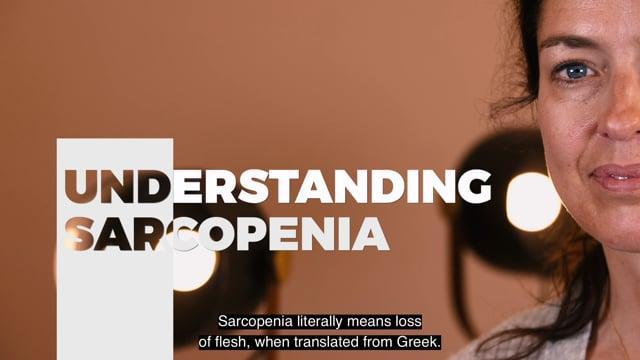
The ISA system in falls prevention at CHwapi
09 Jul 2021
In 2019, 844 fall-related adverse events were reported to CHwapi. In 2020, this number decreased to 574 falls for the same period.

09 Jul 2021
In 2019, 844 fall-related adverse events were reported to CHwapi. In 2020, this number decreased to 574 falls for the same period.
An effective falls prevention policy is a major undertaking. But when the statistics are falling, one can say that somewhere along the line, the efforts made are having a positive effect.
By reducing the number of falls, we reduce their consequences, such as fractures, haematomas and everything else that can happen during a fall.
The CHwapi teams have understood this. In fact, all of the falls prevention measures have enabled the institution to obtain Canadian accreditation.
Firstly, the CHwapi has set up a screening system using a Morse scale to identify patients at risk. The risk of falling is made visible by a bracelet that complements the identity surveillance bracelet. A marker is also added to the computerised care record.
Secondly, a series of activities have been integrated into the Electronic Patient Record (IPR), such as follow-up activities for a patient who has fallen to find out what has been done and to monitor his or her progress.
Finally, an accompanying care plan is kept to know and explain the pathologies that can lead to a potential risk of falling. It is the know-how, the soft skills and the soft skills of the carer and other specialists that allow the knowledge to be expanded.
The management and the training courses organised are designed to stimulate the staff to be vigilant and to apply the universal recommendations and the specific recommendations. Training and incentives are also provided at the medical level, for example on the subject of multi-medication.
The CHwapi offers information by media, with a document management system that compiles all the recommendations, posters, booklets, etc. Sabrina, the occupational therapist, has created two booklets: the first on the recommendations during hospitalisation and the second on the recommendations for fitting out the home after the patient has left.
A root cause analysis is also carried out to measure the responsibility of the carer, the patient (or the patient's health condition) and possibly the general environment.
The nursing staff at CHwapi were able to experience the limitations of the elderly patient by using ageing suits. These combinations include several elements that limit a person's mobility. It is a rich learning experience, which the carers live to tell themselves that one day they will have to fight this heaviness and weight.
An event like this is a great way to get staff on board, in the sense that quality can only be gained if the patient is put at the centre of attention.
The carers will be more vigilant in their speech, leaving the room without forgetting to reinstall the patient and secure his movements after the care.
In the near future, exercises with the physiotherapist will be proposed to integrate an evaluation of the patient's ability to mobilise, through an examination called the Tinetti.
To ensure the transfer of knowledge, the approach developed by CHwapi is to go back to the teams.
In concrete terms, the films recorded by ISA can be shown to the carers to gather their analysis and their points of view.
This type of focus group is an opportunity to explain the reasons for the fall and to check what can be done better in terms of care. Is it related to patients not listening to staff recommendations? Are the falls related to bedside tables with defective brakes? In which case, it is no longer the nurse who should be called to account, but the structure or department that buys the bedside tables or chairs that do not have armrests, for example.
In the falls prevention policy of the CHwapi, the patient becomes a partner and therefore it is important to integrate educational aspects into all measures.
Education targets patients, families and finally the clinical nursing approach to develop an interest in falls prevention.
The reaction time following a fall is also important to put it in the context of the home, as the person is alone. You have to be able to react quickly and not stay 24 or 48 hours before going to check if the patient has fallen.

Looking for an easy way to install a reliable fall detection solution in your facility? Look no further than Mintt. We have streamlined the installation process to make it hassle-free and efficient.

Falls are a major public health problem, particularly among older people. According to the World Health Organisation (WHO), approximately 28-35% of people over 65 suffer at least one fall yearly.

In this episode of Mintt Academy, Sandra De Breucker, Head of Geriatrics of the Erasmus Hospital tells you more about how to better understand sarcopenia.
This website uses cookies
We use cookies to provide you with a better visitor experience. Our website tracks three levels of cookies, you can go to cookie settings to manage your preferences at any time. You can read more about what cookies are and which cookies we collect in our privacy policy.
Cookie settings
We use cookies to provide you with a better visitor experience. Our website tracks three levels of cookies. You can adjust your preferences at any time. You can read more about what cookies are and which cookies we collect in our privacy policy.
Adjust your preferences
Functional cookies are necessary cookies that ensure that the website functions properly and that your preferences (e.g. language, region) are stored properly.
The cookies we use are: essential cookies, craft cms and vimeo
Analytical cookies allow us to analyze the use of the website and to improve the visitor experience.
The cookies we use are: Google Analytics, LEADforensics and leadinfo
Marketing cookies aim to personalize your experience and send you relevant content and offers on this and other websites.
The cookies we use are: Linkedin Insights, Google ads